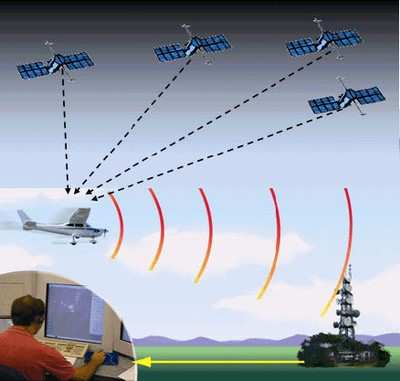Wed, Sep 14, 2016
The ADS-B Out System Can Improve Safety On The Ground At 35 Major Airports
About a year and a half ago AeroSports Update reminded all pilots that the FAA requests transponders to be used on the ground in the altitude reporting mode. Now, AOPA has come out with another reminder regarding the importance of doing this as more ADS-B Out equipped airplanes are in operation.

If you think this goes against what we were taught in the past, you’re right. The Aeronautical Information Manual used to contain information about the problems a transponder can cause when used while taxing on the airport. If that’s your last memory regarding this issue, be aware the AIM has been revised 3 times since 2012 regarding this issue.
ADS-B out works with your transponder to identify your position through satellite connections. As more aircraft become part of the NextGen system through the use of ADS-B out, which is required in the year 2020, the problem of too many transponders cluttering the radar completely disappears. According to the AOPA report, 35 major airports now have a system referred to as Airport Surface Surveillance Capability (ASSC). This system allows controllers to readily locate the position of aircraft on the ground and to identify each specific aircraft.
The latest request from the FAA simply asked us to always leave the transponder active regardless of whether or not the airport is equipped with ASSC. This even includes airports that do not have control towers. In the AOPA article, it suggested this may be just a training exercise to get everybody used to doing it differently from what we were taught just a few years ago.
However, there may still be times when it’s necessary for the transponder to be deactivated if ATC requests you to do so. Nothing has changed with this request; if you are asked to deactivate your transponder, comply with the clearance.
Remember, the FAA is ‘requesting’ that transponders are used on the ground; it’s not a regulation.
(Image from file)
More News
From 2023 (YouTube Version): Legacy of a Titan Robert (Bob) Anderson Hoover was a fighter pilot, test pilot, flight instructor, and air show superstar. More so, Bob Hoover was an i>[...]
Get The Latest in Aviation News NOW on Instagram Are you on Instagram yet? It's been around for a few years, quietly picking up traction mostly thanks to everybody's new obsession >[...]
Aero Linx: B-52H Stratofortress The B-52H Stratofortress is a long-range, heavy bomber that can perform a variety of missions. The bomber is capable of flying at high subsonic spee>[...]
Altimeter Setting The barometric pressure reading used to adjust a pressure altimeter for variations in existing atmospheric pressure or to the standard altimeter setting (29.92).>[...]
"Knowing that we play an active part in bettering people's lives is extremely rewarding. My team and I are very thankful for the opportunity to be here and to help in any way we ca>[...]
 Classic Aero-TV: Remembering Bob Hoover
Classic Aero-TV: Remembering Bob Hoover ANN FAQ: Follow Us On Instagram!
ANN FAQ: Follow Us On Instagram! ANN's Daily Aero-Linx (05.15.24)
ANN's Daily Aero-Linx (05.15.24) ANN's Daily Aero-Term (05.15.24):Altimeter Setting
ANN's Daily Aero-Term (05.15.24):Altimeter Setting Aero-News: Quote of the Day (05.16.24)
Aero-News: Quote of the Day (05.16.24)



